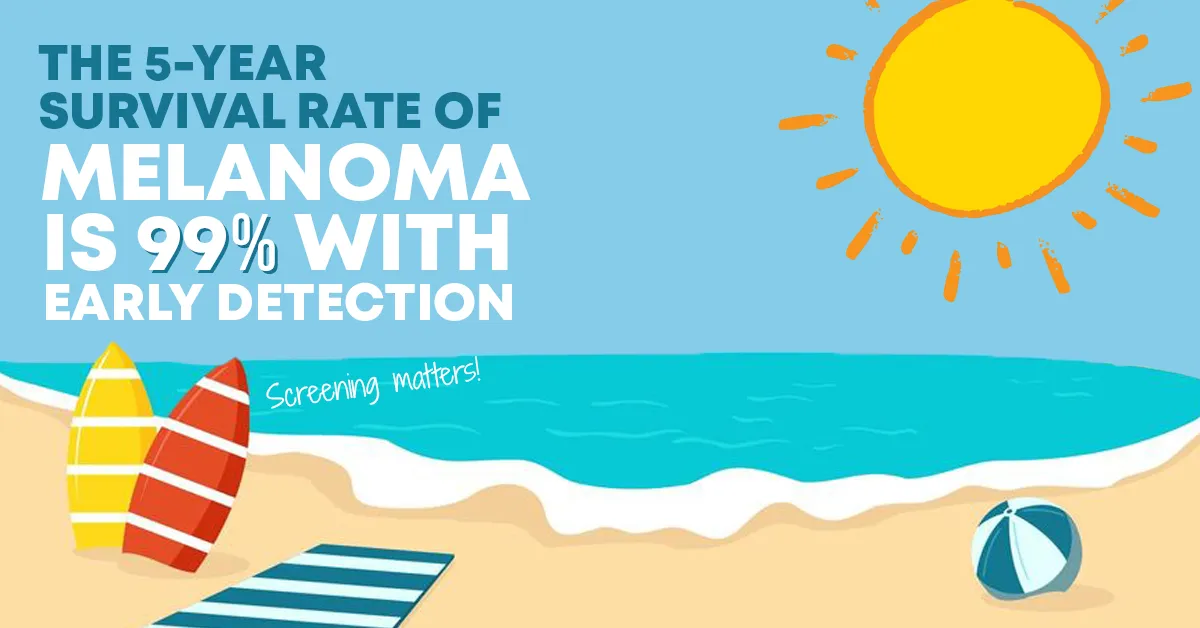Each day, an average of 9,500 people in the U.S. are diagnosed with skin cancer. It is the most common form of cancer in the United States, according to the American Academy of Dermatology Association.
To lower your risk of skin cancer, use sunscreen with SPF 30 or higher and avoid getting sunburns. Even a single blistering sunburn during childhood can double your chance of developing the most dangerous form of skin cancer, melanoma, later in life (Fox Chase Cancer Center).
An estimated 1 in 5 Americans will be diagnosed with skin cancer in their lifetimes, so screening is critical to detect skin cancer as soon as possible.
Early detection is key for treatment options and treatment outcomes. Screening by your primary care provider or dermatologist is a great tool to detect cancer as soon as possible.
What is a Skin Cancer Screening?
Your primary care provider at Integracare can complete your initial skin cancer screening. This is a visual examination where your provider looks for any abnormalities or spots that are medically concerning.
The process is simple and quick. It simply involves looking directly at the skin and determining if any abnormalities require further evaluation.
If a concerning spot is found, your provider may recommend performing a biopsy to remove a sample of the skin. The sample is then sent to a lab for testing to determine if it is cancerous.
How Often Should I Be Screened for Skin Cancer?
The Skin Cancer Foundation recommends yearly screenings for skin cancer. Look your skin over frequently at home by completing a self-exam. If you see anything change or develop, make an appointment with your provider so that they can examine it.
Who Should Be Screened for Skin Cancer?
The risk of melanoma increases with age. According to the American Cancer Society, the average age of a person diagnosed with melanoma is 66.
Screening is particularly critical for people over age 65, but younger patients can develop skin cancer as well. If you have any areas of skin that are concerning to you, make it a point to get screened.
I have had a number of patients under the age of 65 develop skin cancer. A simple skin check can be done at any age and I recommend it for all adult physicals.
What’s the Difference Between Skin Cancer and Melanoma?
Melanoma is a type of skin cancer – but not all skin cancer is melanoma.
There are three main types of skin cancer: melanoma, squamous cell carcinoma, and basal cell carcinoma (most common). Each has a different visual distinction.
Of the three, melanoma is the most life-threatening because it is the only form of skin cancer that is likely to spread to other parts of the body.
What Should You Watch for?
When doing a self-exam of your skin, there are a few key warning signs to watch for:
- Uneven spots that are not the same on each side
- Jagged, ridged, or wavey edges to the spots
- Fading or uneven shading on the spot (a simple mole is often one solid consistent color)
- Spots that are larger than 0.25” in diameter
- Changing or evolving spots – take a picture of these to track the change over time
In general, Eric Greene tells his patients to monitor their entire body for lesions that do not seem to heal, lesions that are becoming larger, and lesions that are darker in color, irregularly shaped, and asymmetric in color.
If you notice any of these things, talk to your provider so you can have a professional examination.
Where Can You Have a Skin Cancer Screening?
Integracare offers annual skin cancer screening days at both of our locations. The next screening day is scheduled for April 23 in Sartell – request an appointment now.


